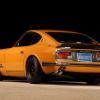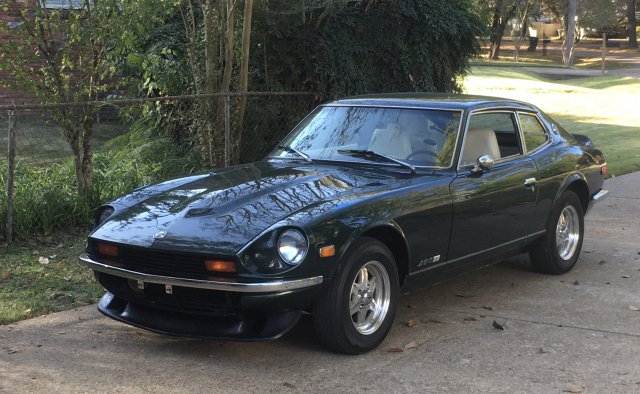-
Posts
33 -
Joined
-
Last visited
-
Days Won
2
Coelocanth81 last won the day on January 8 2021
Coelocanth81 had the most liked content!
Profile Information
-
Gender
Male
-
Location
Central Coast
Recent Profile Visitors
2020 profile views
Coelocanth81's Achievements
-
curious to know what are the best L Series Transmission options now?
Coelocanth81 replied to primaz's topic in Drivetrain
Manuals are definitely "yesterday", and so is skill - with all its trials, tribulations, and triumphs. I'll happily keep living in the past. When it's time to give up on driving, I'll just buy a Tesla and let it's unparalleled performance auto-pilot me into a bridge pylon. DCTs are for passengers. -
I'm experiencing a metallic clunk sound upon releasing the clutch pedal with the transmission in neutral. There is no groaning or squeaking, so I think my throwout bearing is ok. Clutch hydraulics are brand new, and the pedal is adjusted per the FSM. I can actually feel the clunk in the shift lever, and it occurs just prior to full clutch pedal release. I replaced the hydraulics because the pedal was soft, and master cylinder seal was failing. I thought maybe the hydraulics were causing a clutch drag, but now I'm not sure that was the problem. Reverse has been grinding upon engagement. Anyone have any ideas?
-
So, 280Z heater cores have been unavailable for a while now. I've been told a Ford Escort heater core will fit, but I'm unsure of the year. There's also Brassworks - who can reproduce one for the cost of 400 dollars shipped. Anybody got any suggestions?
-
Like engine swaps, I view this suspension package as a fairly substantial re-invention of the car. I was looking at the AlterKtion suspension/steering package for the late 60's early 70's Mopars in much the same way. To some extent, you give up the very essence of a car the moment you dream of further empowering it. Mike Kelly talked about how far his project had taken him from the simple joy of driving a stock Z, and there's no doubt about how far one could go down the rabbit hole. I might try to pick Ohm's brain a bit more. I really don't want to trouble him too much - as I'm not a customer yet. I'd like to know what specific criteria he had in mind when designing the product. I understand the motivation for the rear suspension; it's a bolt-on solution for handling greater power, more tire clearance, and more adjustability for a variety of setups. I think the jury's out for me on the dual control arm front suspension, though. Like some of the other commenters, I'm not convinced that the McPherson strut front end is in need of a complete replacement.
-
Race cars are controlled by the rules established for each class, so there are as many "fastest Z's" as there are classes. Obviously, we wouldn't have a cottage industry built around modifying the stock design if it went out and won every race in showroom form. There's a lot of thoughts about how the Track Attack design "looks", but so far we haven't conclusively laid out any specific ways in which the design is deficient. Since we don't know much, let's start with what we do: 1: There could be noise, harshness, and durability issues due to the large number of heim joints - especially on the street. 2: The relationship between the front and rear suspension dynamics need to be studied to determine their overall impact on car control. (good discussion to be had here) Adjustability, weights, installation issues, and impact upon the drivability and performance characteristics of the car are all still unknowns - as are any cost/benefit ratios for various applications.
-
Depending on the design. If the pivot swingarm has different attachment points for the shock and strut-rod, then the leverage ratio of the spring and shock are adjustable. In doing this however, you’d want to optimize the wheel travel to match the full travel range of the spring and strut. There's likely only one ideal placement point for the respective items on the pivot, so a wide range of adjustment options may not prove as useful as they initially seem on paper.
-
For a street car, excessive noise could be a show-stopper. I watched that video, but I’m not sure that the racket we were hearing was actually coming from the interior strut assembly. It sure would be nice to get some in-car footage of a running setup to know for sure, though. As for weight - I’m not certain what the apples to apples weight comparison is between a stock Z suspension and the track attack components. As long as the weight goes towards strengthened components and improved suspension articulation, I wouldn’t mind it - although, as a 2+2 owner with factory A/C, the lightweight train departed the station before my arrival! Haha..
-
That's what I counted, too. I definitely feel that the design leans on them a bit much for my purposes. The cost of those R-joints are eye-watering - I think I'd only put them in locations that are external - leaving the interior joints to regular hiem joints - as they won't be subject to contamination inside the car. With respect to the noise, I'd bet shock valving would be audible if there were no slack in the joints. Being outside the car, we never hear the noise that our struts make, but I can promise you they're not completely silent. The open hole in the top of the strut tower might also be an inlet for exterior noise, depending on how it gets sealed.
-
If I remember correctly, R-joints use some kind of spring-loaded tapered sleeve that has a self-tightening effect to prevent slop as the joint wears. I also wanna say that the sleeves were grooved to promote a self-cleaning effect, and are made of Delrin(?) instead of teflon. They're definitely not sealed, but if they have the ability to shed/reject grit, it might bear some fruit for reliability. I agree with about their claims on poly bushings. If they're lubed correctly, they'll stay quiet. They've got a point about increased bushing "stiction" reducing the suspension performance. The upside of a bushing is also in the fact that it has some slop in it - which can save components from breaking in the event you hit a pothole in a turn, or some other "feature" that wouldn't exist on a properly groomed road course. In the end, I feel like a street car could definitely benefit from poly bushings over hiem joints in numerous locations. They gotta make a sales pitch, I suppose.
-
I was considering this as well. I've got nothing against the McPherson strut design - I'm just trying to maximize the inboard wheel clearance. It occurs to me that the inner front wheel clearance limitation on a stock system with coil-overs might actually be the inner fender (when the wheels are turned), and not the spring/strut assembly. In this case, I'd be happy to retain an improved version of the factory front suspension. This is just me thinking out loud. Any takers?
-
I'm not sure there's any reason you couldn't mix and match. They appear to be highly customizable for various configurations - although, I'm still trying to get some feedback from someone who's actually got it installed and running. For a street car, my main concern is the abundant use of Heim joints. These are fantastic on a race car, but they're a bit firm on the street, and are subject to damage from contamination. I'm looking into the possibility of getting the kit, and substituting Ridetech R-joints in all the external locations to help mitigate that. My primary interest in this kit is the potential for gaining inboard tire clearance beyond what is possible with a McPherson strut system with coil-overs installed. I'm trying to minimize the amount of fender flaring that will be required for tires in a 275 to 315 width range.



